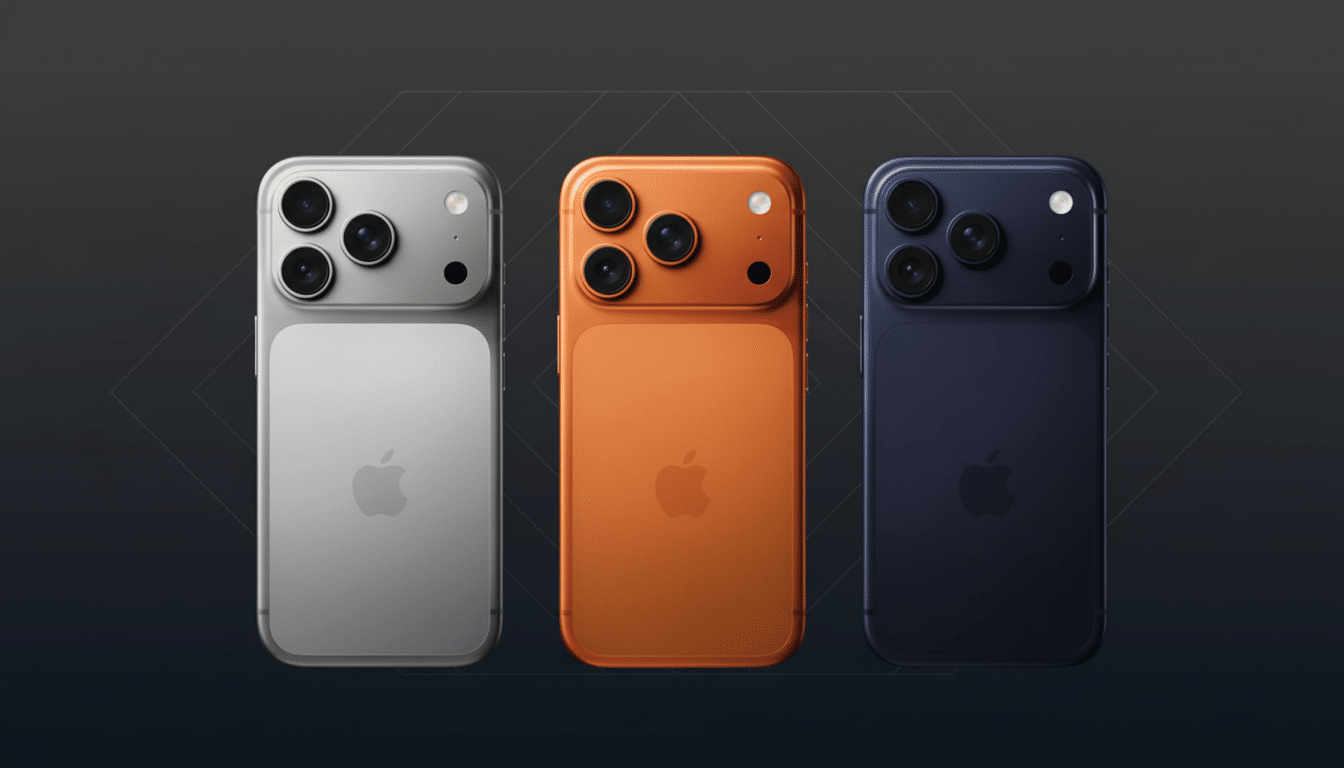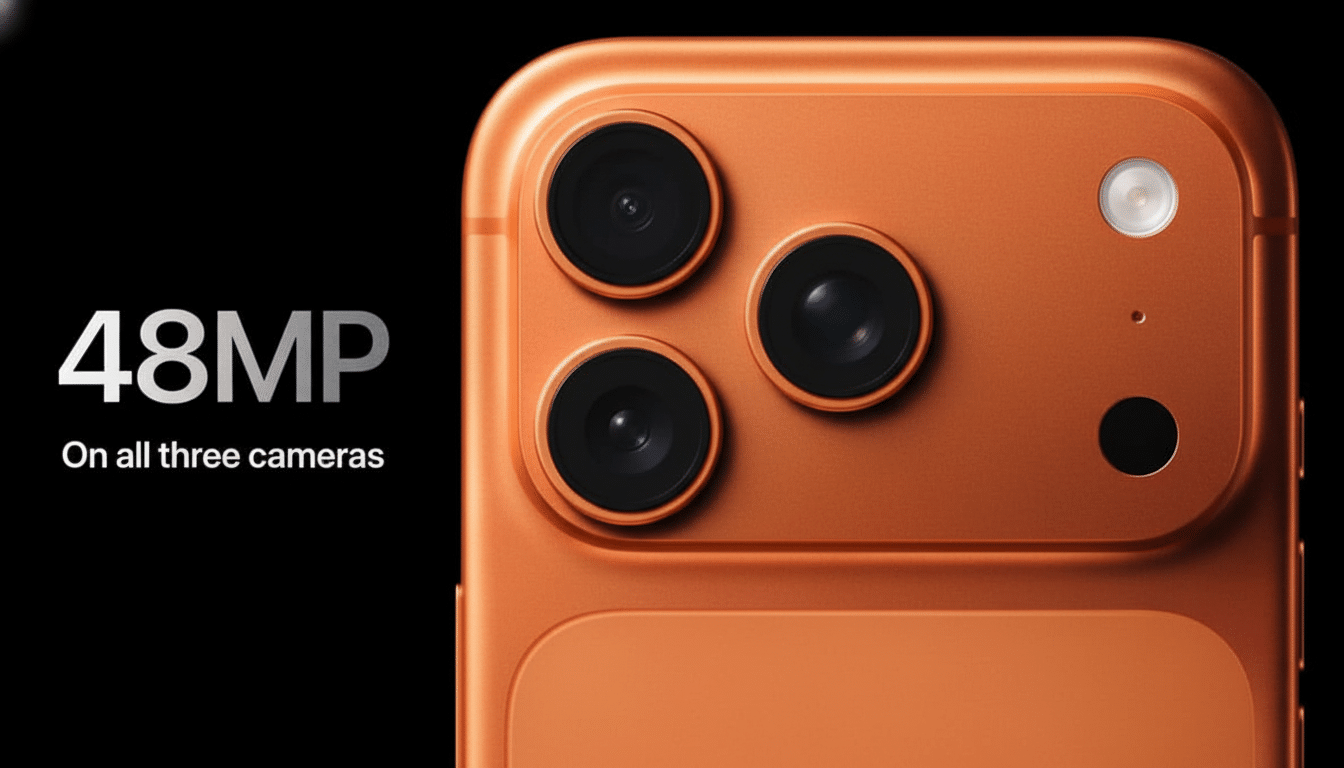Apple’s new iPhone 17 Pro and iPhone 17 Pro Max come with a simple, clear brief: somehow reinvent the body, extend battery life and turn the camera system into a proper pro tool.
The end result is a duo of flagships that couple an all new “iPhone Unibody” aluminum housing with a bigger power reserve, triple 48MP camera array and what Apple bills as the fastest CPU of any smartphone, the A19 Pro chip.

All-new unibody design and cooler thermals
The headline design change is its first ever iPhone Unibody; it is a stiff aluminum frame, replacing last year’s titanium approach on Pros. Because it’s not just about looks — it’s all about thermal performance: Apple says the new chassis dissipates heat from the processor 20 times better than titanium, and it’s paired with a vapor chamber to draw heat away from the CPU and GPU under load.
That matters for sustained performance. Anticipate faster frame rates in graphically demanding games and less throttling during extended video edits — use cases that have gone mainstream now that mobile gaming makes up about half of all global games revenue, according to analysts at Newzoo. In everyday terms, the cooler-running frame should mean more comfortable charging and navigating in sweaty conditions.
Durability gets a bump too. Ceramic Shield now wraps around to the back side, and if the design feels different, the measurements are reportedly the same: 6.3 inches for iPhone 17 Pro and 6.9 inches for Pro Max, per Apple’s spec sheet. The greater volume inside to play with, freed up by unibody manufacturing, also leaves room for larger batteries.
Bigger battery, faster charging
Apple doesn’t usually cite milliamp-hour, but its test-of-resistance numbers do the talking. The iPhone 17 Pro should last up to 33 hours on video playback, with the Pro Max stretching six hours beyond that. That’s a significant jump for heavy users — such as frequent flyers who stream downloaded shows or field workers who rely on GPS and 5G all day.
Charging speeds climb as well. Using a high‑wattage USB‑C adapter, you can get to 50 percent in around 20 minutes, Apple says. It does not set you up for another gaudy, triple‑digit wattage arms race, some of which we see in Android flagships, but continues Apple’s pitch: fast top‑ups with less heat, which is supposedly nicer to long‑term battery health, according to things like Battery University.
Pro-grade cameras all around with a 48MP punch
The camera plateau — Apple’s term for the bulbous bump — is home to a trio of rear cameras, peripherals each based around a 48‑megapixel sensor. There’s “optical‑quality” 8x telephoto output at 12MP headline ability, alongside a maximum 40x digital zoom. In practice, Apple is blending high‑resolution sensor data with computational processing, to create reach that looks lossless but with none of the softness you’d expect from a long digital zoom.

Setting the flash farther away from the lenses is a nifty, small alteration. By pulling the elements out further from the sensor, Apple decreases the chances for specular flare and improves subject separation in reflective scenes — like glassware at weddings or cityscapes in drizzle. Low‑light photography ought to benefit from the A19 Pro’s image pipeline, too — if nothing else, we’re all but certain that it can do more sophisticated multi‑frame noise reduction without gumming up the works when it comes to capture times.
Up front, a Center Stage camera with 18 megapixels deals with selfies and video calls. Creators will appreciate the consistent 48MP across the rear system: framing, detail retention and color response are in check whether you’re shooting wide horizons, or tight telephoto heads, simplifying grading and stitching in post for those who edit on desktop suites from Adobe or Blackmagic Design.
Performance and connectivity
Anchoring the experience is the A19 Pro’s Apple-typical emphasis on CPU efficiency and GPU throughput. Apple isn’t disclosing cycle‑by‑cycle performance gains, per se, but the positioning — and new thermal architecture — point to enhanced sustained performance under long term loads like never before in a Pro system. That’s a pragmatic win for console‑class game ports and on‑device AI features.
There’s also a clean‑sheet design for wireless, powered by Apple’s N1 chip, a combined Wi‑Fi 7, Bluetooth 6 and Thread solution. Multi‑Link Operation in Wi‑Fi 7 has the ability to bond more than one 6 GHz channel, leading to less latency and higher peak throughput, a big advantage for cloud gaming and large iCloud restores, according to the Wi‑Fi Alliance. Thread support further cements the iPhone’s position as a smart‑home controller among Matter accessories.
Pricing and what you’ll get
Pricing stays the same: iPhone 17 Pro costs $1,099 and iPhone 17 Pro Max starts at $1,199. Apple has also begun taking pre‑orders, and wider retail availability is to follow. A familiar storage ladder, new TechWoven accessories replacing FineWoven, and the usual carrier promos once channel inventory ramps.
Bottom line: the iPhone 17 Pro line isn’t seeking novelty for novelty’s sake. The change to an aluminum unibody, the larger battery and the all‑48MP camera stack seems purpose‑built for long-term stability and practical imaging enhancements. If your primary concerns are endurance, thermals and telephoto reach, this is the most substantial Pro update in years.

